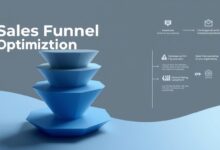Elevate Your SaaS Sales with the Best CRM
In today’s fast-paced software industry, building lasting relationships with clients is key to growth. For businesses in the SaaS space, managing customer interactions efficiently isn’t just a goal—it’s a necessity. That’s where the right tools come into play.
Did you know 47% of businesses report better customer retention after adopting specialized systems? With the market for these tools projected to grow by 12.6% annually—reaching $262.74 billion by 2032—now’s the time to act. This isn’t just about keeping up; it’s about staying ahead.
Here’s another insight: 85% of users say they’ll pay more for software if the provider delivers outstanding support. By streamlining workflows and personalizing service, you can turn casual users into loyal advocates.
This guide will walk you through choosing solutions that fit your unique needs. We’ll cover essential features, implementation strategies, and ways to maximize your investment. Ready to transform how you connect with clients? Let’s get started.
Key Takeaways
- 47% of businesses improve customer retention with modern relationship management systems
- The global market for these tools will hit $262.74 billion by 2032
- 85% of clients pay more for software with exceptional service
- Streamlined workflows lead to stronger client relationships
- Personalized support drives long-term business growth
Understanding the Importance of CRM in SaaS Sales
Imagine trying to navigate a busy highway without traffic signals—that’s what managing client interactions feels like without proper systems. Disorganized records and missed opportunities create friction in customer relationships. Modern tools turn this chaos into clarity.
Streamlining Customer Data Management
Duplicate entries and scattered information plague teams relying on spreadsheets. A centralized platform merges data from emails, forms, and social media into unified profiles. This eliminates confusion when multiple team members engage the same lead.
Automated systems capture details from every interaction. Contacts get tagged with relevant notes—like feature preferences or support tickets. No more digging through inboxes to find critical details before a client call.
Boosting Sales Team Efficiency
Manual data entry steals hours from productive work. With instant access to organized records, reps focus on building connections instead of admin tasks. Clear lead status updates help prioritize follow-ups.
Alignment between departments improves when everyone views the same real-time data. Marketing shares campaign insights directly in contact histories. Sales spots trends faster, turning insights into actionable strategies.
Transparency in pipelines means fewer surprises. Managers track progress without endless check-ins, while accurate forecasts guide business decisions. It’s not just about working harder—it’s about working smarter.
How a SaaS CRM Revolutionizes Customer Relationship Management
Modern businesses thrive on meaningful connections. Specialized platforms reshape how teams engage with clients at every stage. These systems turn scattered data into actionable insights, helping teams build stronger bonds while driving growth.
Enhancing Lead Nurturing Processes
Cloud-based platforms merge interactions from emails, social media, and website forms. This unified approach lets teams spot patterns in client behavior. For example, a prospect downloading a pricing guide might trigger personalized follow-ups within hours.
Automated sequences ensure timely responses. When someone schedules a demo, the system can:
- Assign tasks to account managers
- Send onboarding checklists
- Schedule check-in reminders
Optimizing Customer Retention
Loyal clients drive recurring revenue. Advanced tools track usage metrics and support tickets to predict churn risks. A user struggling with feature adoption might receive targeted training materials automatically.
| Retention Strategy | Tool Feature | Outcome |
|---|---|---|
| Behavior Tracking | Usage analytics dashboard | Identify at-risk accounts early |
| Personalized Outreach | Email campaign builder | 22% higher engagement rates |
| Feedback Loops | Automated survey triggers | 38% faster issue resolution |
Teams using these methods report 41% longer client lifespans. By combining real-time data with smart workflows, businesses turn casual users into brand advocates.
Common Pain Points Without a CRM for SaaS Companies
When customer information lives in ten different places, growth becomes a guessing game. Teams waste hours hunting for lead details instead of closing deals. Missed follow-ups and duplicate efforts create friction that drives clients away.
Lead Scarcity and Disorganized Data
Without centralized systems, 63% of teams report losing track of promising leads. Spreadsheets and sticky notes lead to duplicate entries—one company found 17 versions of the same client profile across departments. When three reps accidentally pitch the same prospect, trust evaporates faster than morning dew.
“Data chaos isn’t just annoying—it’s expensive,” notes a recent tech operations study. Scattered information forces teams to:
- Re-ask clients for basic details
- Miss renewal deadlines
- Overlook upsell opportunities
Stalled Sales Pipeline Challenges
Manual tracking turns pipelines into mystery boxes. Deals get stuck when no one knows whose turn it is to follow up. One SaaS firm discovered 40% of their opportunities languished in “negotiation limbo” for months.
Forecasting becomes guesswork without real-time insights. Teams relying on spreadsheets over crm software report 35% more revenue surprises. When handoffs between sales and support take days instead of minutes, customers feel neglected—and churn rates spike.
Discover the Best Sales CRM for SaaS Companies
Choosing the right platform can make or break client management strategies. Modern teams need systems that grow with their needs while keeping data organized. Let’s explore what makes these tools essential for scaling operations.
Top Features to Look For in a CRM
Effective platforms offer more than contact storage. Look for automated lead scoring that identifies hot prospects. Pipeline visualization tools help teams track deals from first contact to closing.
Integration with email, calendars, and project management apps saves time. Custom reporting turns raw numbers into growth strategies. Built-in analytics predict churn risks before clients leave.
Comparing Leading CRM Solutions
Popular options cater to different needs and budgets. Here’s how top platforms stack up:
| Platform | Starting Price | Standout Feature |
|---|---|---|
| HubSpot CRM | Free | Built-in onboarding guides |
| Salesforce Customer360 | $25/user | AI-powered insights |
| Monday Sales CRM | $36/user | Visual workflow builder |
| Pipedrive | $14/user | 4.4-star user rating |
Free tiers work for startups, while enterprise teams might prefer customizable options. Consider trial periods to test usability before committing. The ideal choice balances power with team adoption rates.
Key CRM Features Every SaaS Business Needs
The right technology stack transforms how teams operate. For businesses focused on recurring revenue, three capabilities separate basic tools from game-changers: intelligent automation, unified communication channels, and predictive insights.
Smart Workflow Design
Automated task routing ensures leads never slip through cracks. When prospects download resources, systems can assign follow-ups instantly. Teams using these features close deals 28% faster according to recent data.
Custom triggers update records automatically. Completed demo? The platform schedules check-ins and shares relevant case studies. This reduces manual work while keeping interactions timely.
Unified Engagement Systems
Combining communication tools prevents mixed messages. Marketing campaigns sync with support histories, letting teams personalize outreach. A client who opened three emails about analytics features might appreciate targeted training invites.
Centralized customer data improves collaboration. Sales sees support tickets before renewal talks. Marketing tracks feature adoption rates to refine messaging. This alignment boosts retention by 19% in high-growth organizations.
FAQ
Why is streamlining customer data management critical for SaaS teams?
Centralizing customer data helps teams track interactions, personalize outreach, and identify upsell opportunities. Tools like HubSpot CRM or Salesforce offer real-time dashboards to simplify data access and reduce manual errors.
How does automation improve sales cycles in the SaaS industry?
Automation handles repetitive tasks like follow-up emails, lead scoring, and pipeline updates. This lets teams focus on high-value activities, speeding up deal closures and improving workflow efficiency.
What challenges arise without dedicated tools for contact management?
Disorganized data leads to missed follow-ups, duplicated efforts, and poor communication. Platforms like Pipedrive or Zoho CRM centralize contact details, ensuring teams stay aligned and maintain strong customer relationships.
Which features are non-negotiable when selecting a platform for SaaS businesses?
Look for sales automation, customizable pipelines, integration with marketing tools, and robust analytics. Solutions like Close or Freshsales excel in these areas, adapting to unique processes while scaling with growth.
How do integrated marketing tools impact customer retention?
Combining email campaigns, social media, and behavior tracking helps tailor engagement strategies. Platforms like ActiveCampaign automate personalized touchpoints, reducing churn and boosting lifetime value.
Can small SaaS startups benefit from advanced workflow management systems?
Absolutely. Tools like Insightly or Copper offer scalable plans with features like task automation and revenue forecasting. These systems help startups compete by optimizing processes from day one.









